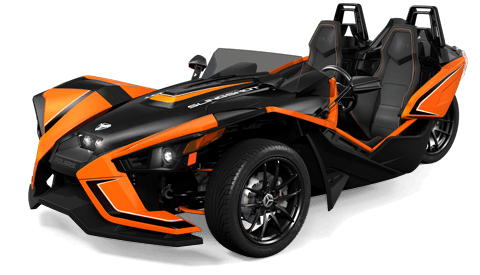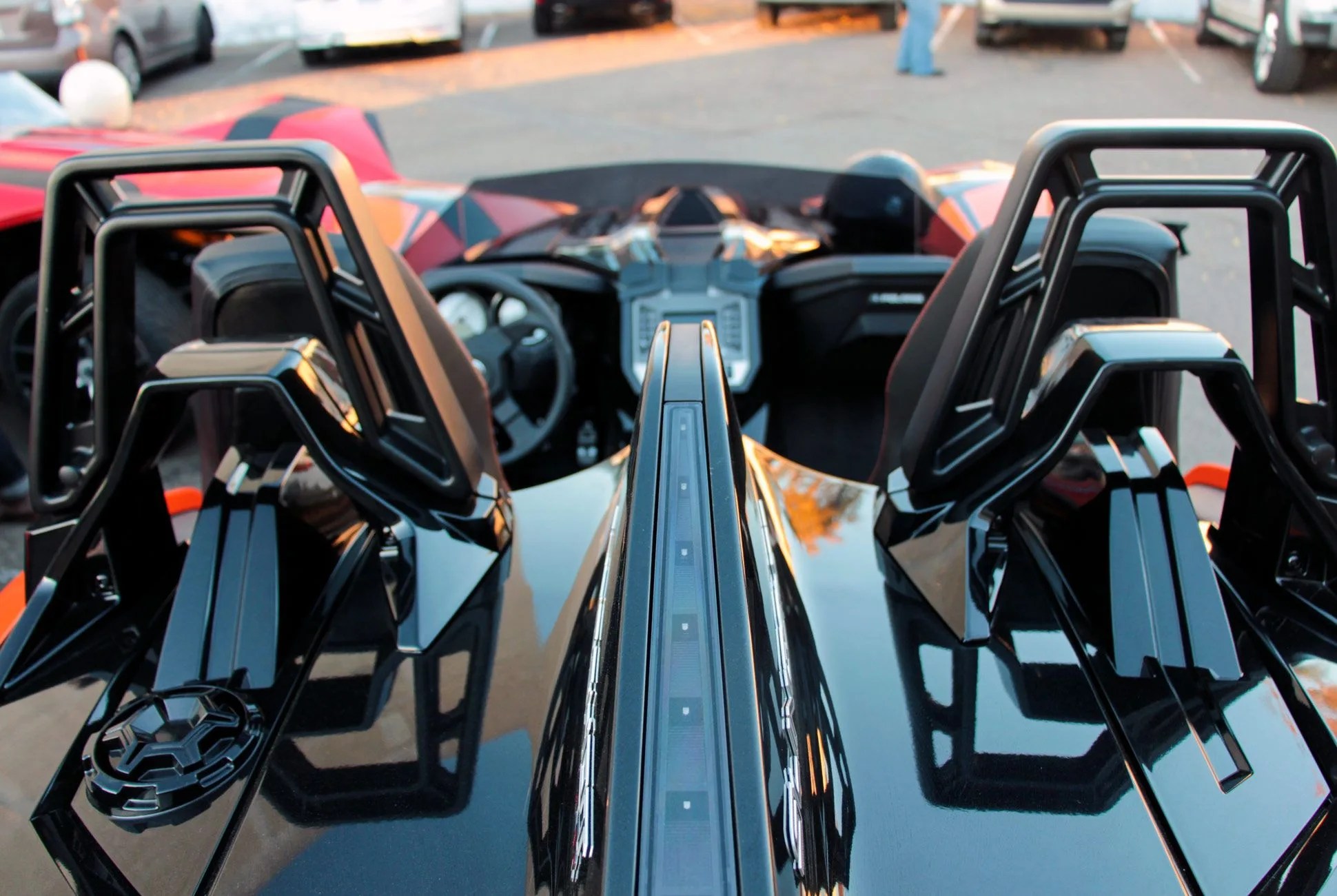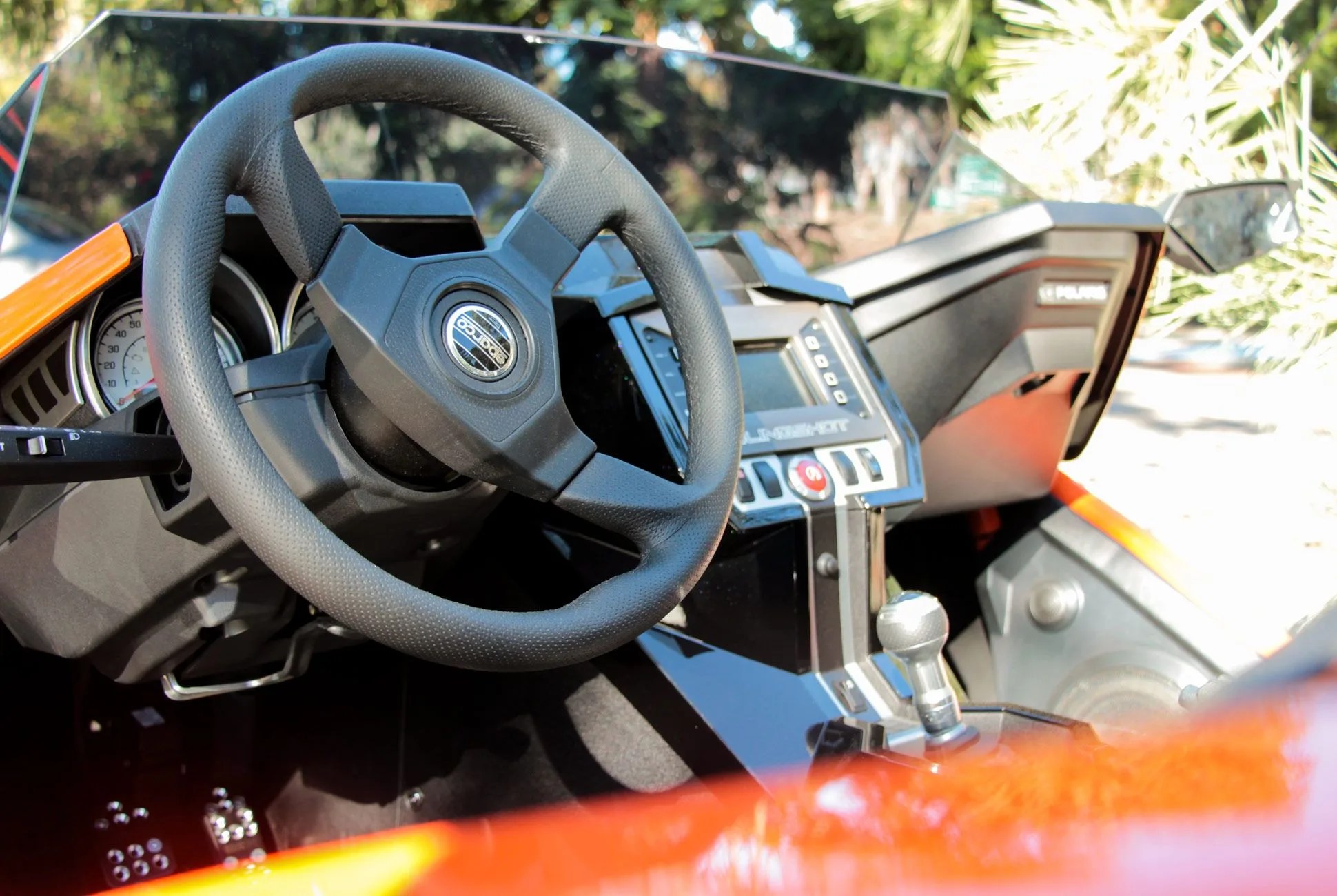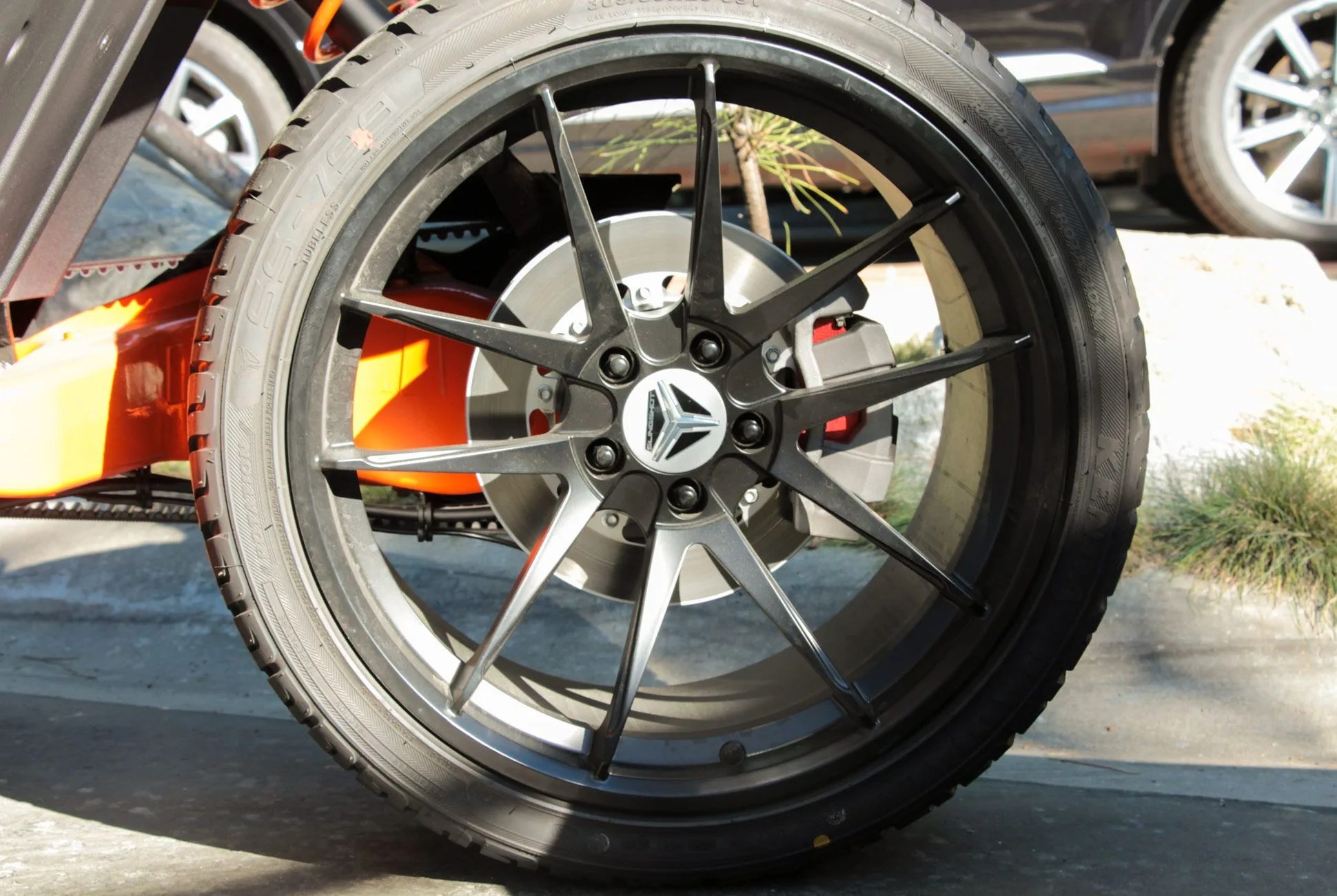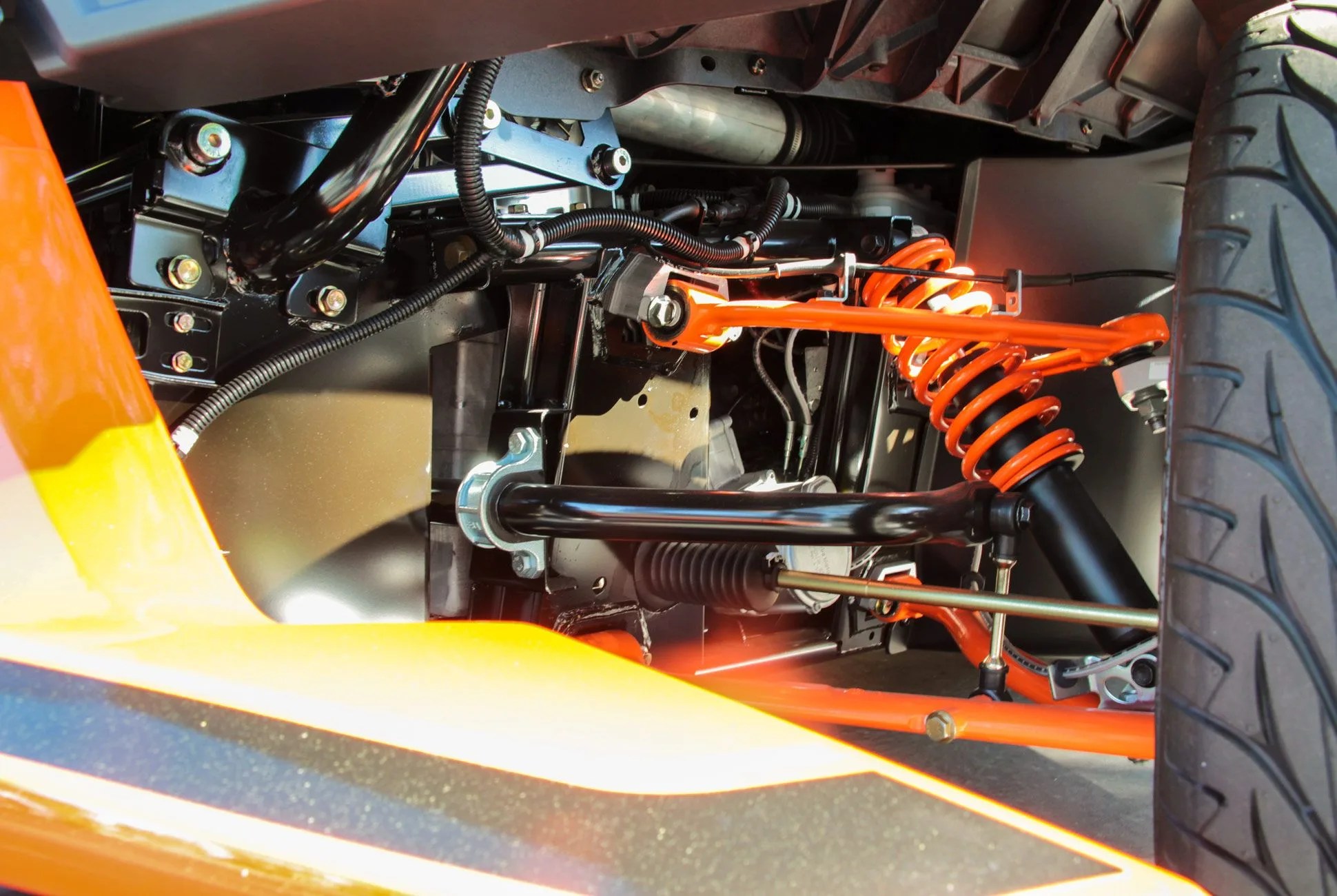4 photos
The Polaris Slingshot is a vehicle with an identity crisis. Parked, it resembles a high-heel shoe made for a Transformer, a mechanical creation à la Dr. Moreau. It is an oddity that dips its tires in the waters of both car and motorcycle. It sits as wide as a Lamborghini Aventador across the hood while plastic panels out back barely extend beyond its single slick of rubber. It is about as subtle as a speakerphone call in church and as confusing as a cat that barks. So what is it, exactly?
Texas calls the Slingshot an “autocycle,” whatever that means — neologian lawmakers wouldn’t allow Slingshot sales until the term was coined. Polaris, however, calls it many things: a reverse trike; a three-wheeled motorcycle; a two-seat roadster that is definitely not a car. The company is adamant about that last bit. It doesn’t meet any crash test standards; unless you opt for the SLR trim package, there is no windshield; there are neither airbags nor doors; there is no trunk for groceries (but you do get a couple cubbies behind the seats). No, the Slingshot is most certainly not a car, and it’s not a motorcycle either. Not even close.
“What is it?” is as tough to answer as the Slingshot is to maneuver into. Climbing over the Slingshot’s massive sills and into a seat is an act of inelegant and uncool contortion; getting out is just as bad. Once settled, the cabin layout is very car-like: there is a steering wheel, a five-speed stick shift and three pedals. Because of a lack of B-pillars, seatbelts are center-mounted, making them feel alien. Regardless, the waterproof seats are supportive and comfortable enough, though the headrest slopes a touch too far forward for long-distance touring — especially when helmeted. But you aren’t driving a Slingshot to relax.
Polaris Slingshot
